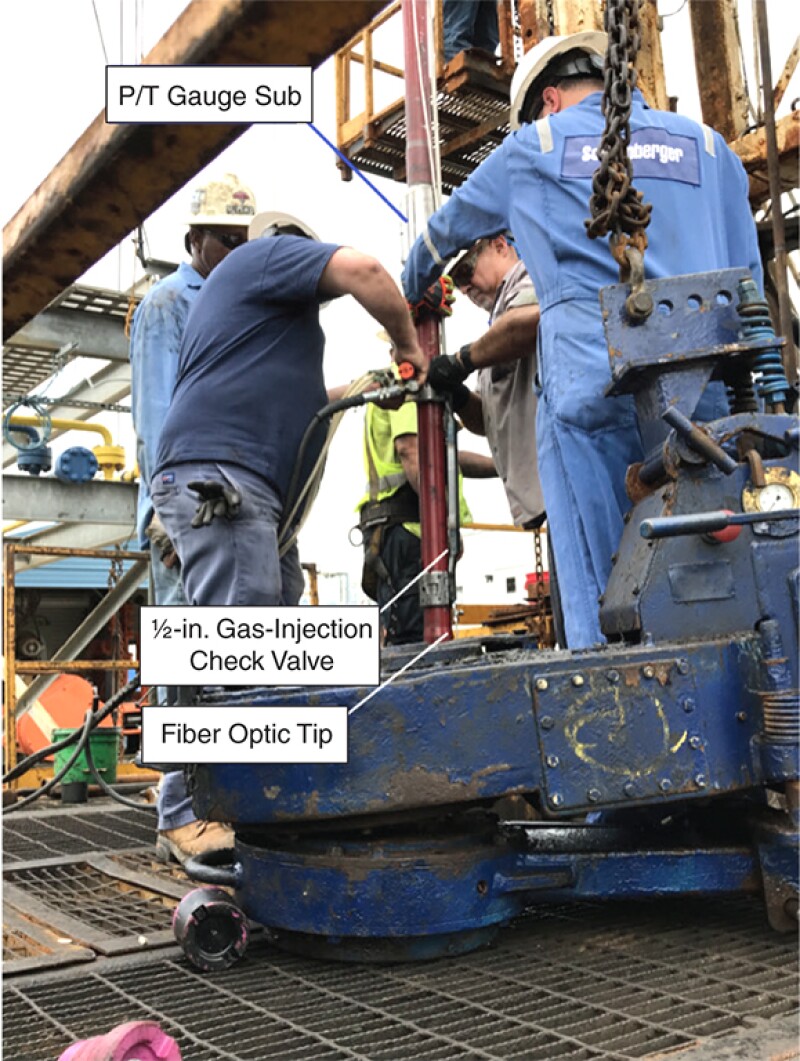The project described in the complete paper used a 9⅝-in., 5,200-ft-deep wellbore retrofit with distributed fiber optics [distributed temperature sensing (DTS) and distributed acoustic sensing (DTS)] and four permanent pressure/temperature (P/T) gauges to sense and visualize gas-kick dynamics downhole in real time. Variations in flow rate, kick size, and backpressure were investigated, including gas migration during shut in. Data were consolidated with the rig-recorded surface data to create a complete picture of the experiments.
Project Background
The current work is a major component of the 3-year US National Academies-funded Gulf Research Project (GRP) at Louisiana State University (LSU). The project was proposed inside the focus area of offshore safety as a part of the multifaceted GRP. The full-scale testing component of LSU’s project is concentrated on the proof-of-concept of distributed sensing for gas-in-riser detection and characterization, especially focused around drilling and completion operations. The project uses the existing facilities at LSU’s Petroleum Engineering Research and Technology Transfer Laboratory (PERTT Laboratory).
Potential of Fiber-Optic Technology.


